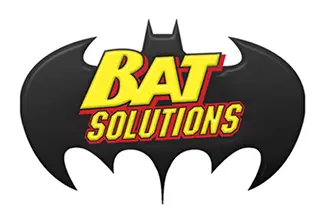Bat Control Services
Bat Control involves managing and mitigating issues related to bats in human inhabited areas. While bats play a beneficial role in ecosystems, their unpredictable flight patterns can lead to conflict when they inhabit human structures and urban spaces.
These critters can carry diseases like rabies, and bat droppings, known as guano, may harbor harmful pathogens. The accumulation of bat guano can create unsanitary conditions and comes with additional health risks even when bats have left an area. Furthermore, the noise, vibrations, and odor caused by a bat infestation will often disrupt your working or living space
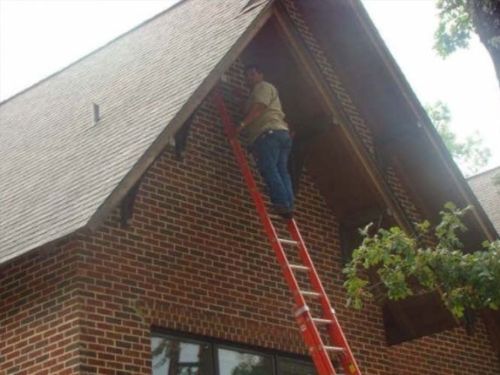
Effective and Humane Bat Control is necessary to prevent bats & humans from coming in close contact. This primarily involves bat removal services but can also include the conservation of roosting sites, building bat houses in secluded locations, conservation efforts, and educational outreach.
Texas Bat Solutions Has Over 30 Years Of Professional Experience with Bats. We Are Insured & Fully Licensed by the State of Texas to conduct all bat-related services. If You Got Bats… We Got Solutions.
Bat Control Regulations
Following regulations when interacting with bats is crucial. Regulations aim to protect vulnerable species like bats and enhance public safety by addressing potential health risks. Failure to comply with regulations can lead to legal consequences, fines, or other penalties for violating wildlife protection laws.
Any activity involving the harming, killing, or capturing of bats in Texas requires a permit, and live exclusion of bats is prohibited during the months when bat pups are present and cannot fly. Homeowners need to check local and state laws to determine the legal standing of bats in their area and the approved methods for removal.
Enlisting the help of professional bat control services such as Texas Bat Solutions ensures that you avoid legal issues.
Protected Bat Species:
Several bat species are protected by the Endangered Species Act (ESA) due to their ecological significance and declining populations. For example, the Mexican Long-Nosed Bat is classified as threatened by the ESA and thus requires special care during bat control.
The Mexican free-tailed bat (Tadarida brasiliensis) is a good example of a species protected by state regulations. This bat species plays a crucial ecological role by consuming vast quantities of pests, forming massive colonies in caves and bridges across the state.
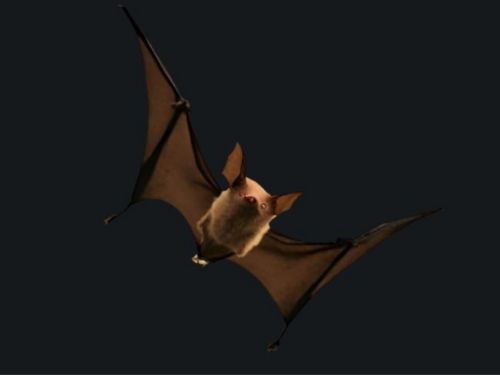
Seasonal Restrictions:
Some jurisdictions implement seasonal restrictions on bat removal to protect sensitive periods in their life cycle. The most common restriction is maternity season, when pregnant females give birth and raise their young. In Texas, this occurs in the late spring or early summer. Disrupting bats during these times can harm the reproductive success of a bat colony.
After the maternity season has concluded, regulations typically become less restrictive in the fall. This period allows property owners and wildlife professionals greater freedom to get rid of bats and prevent them from roosting in unwanted areas.
State and Local Regulations:
Many localities require permits for bat control activities. Obtaining the necessary licenses ensures that the process aligns with state and local regulations and allows authorities to monitor and approve the methods employed. Some laws require hiring licensed and experienced professionals to remove bat colonies safely.
Certain local regulations may provide provisions for emergencies requiring immediate action due to human health or safety concerns. Building codes and regulations may dictate the permissible methods for bat removal from structures. Texas Bat Solutions can help you navigate these requirements effectively.
Health Regulations:
Compliance with public health laws is crucial to protect the public and those involved in the removal process. Trained and experienced professionals are equipped to handle bats safely, minimizing the risk of bites or scratches.
Bats can transmit Rabies to humans through bites or scratches from bats. Bats displaying abnormal behavior or found in living spaces also pose an increased risk, and proper protocols must be followed to minimize the chances of disease transmission. Additionally, the accumulation of bat droppings can pose risks, and its removal must adhere to guidelines to prevent the spread of diseases.

Wearing protective clothing, including gloves and masks, is essential when handling bats or entering spaces where bats may be present. Health authorities stress the importance of avoiding direct contact with bats to reduce the risk of disease transmission, even if they appear healthy.
Get A Quote For Professional Bat Control!
Fill Out The Form Below or Call Us @ (832) 726-2771
Other Bat-Related Concerns
Being wild animals, bats can pose certain risks and concerns that must be addressed. From finding a dead bat to understanding the public health risks associated with bats, it’s important to be informed and prepared.
Bats can affect human health by spreading diseases like rabies and histoplasmosis through their feces. Additionally, rabies can be transmitted to humans via a bat bite or through a bat’s saliva entering an open cut or mucous membrane, leading to encephalitis in humans and animals.
In case of physical contact with a bat, wash the affected area thoroughly and seek medical assistance from the local health department or veterinarian.
If You Find a Dead Bat:
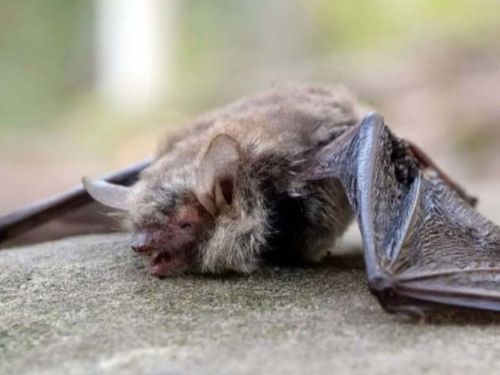
If you find a dead bat, it’s important to handle it safely and responsibly. Here are the steps to follow:
- Always avoid direct contact by using disposable gloves.
- Put the bat in a bag.
- Then, place the bagged bat in a second bag.
- Seal the bag securely.
- Contact Local Wildlife Protection

Methods of Bat Control
Bat Removal:
The primary method of controlling bats is Bat Removal Services. We at Texas Bat Solutions specialize in bat exclusion using custom-built exclusion devices. These one way doors allow bats to exit but prevent re-entry. We then provide “bat proofing” by assessing the site for structural damage and sealing any potential entry points. This is the primary service that we provide.
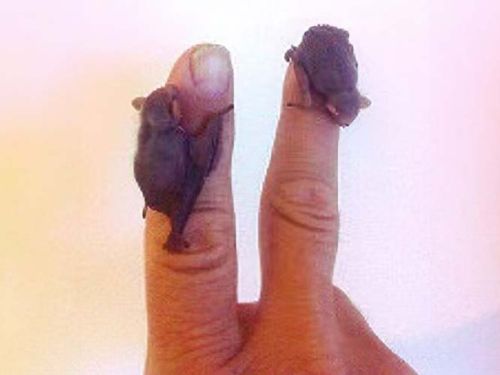
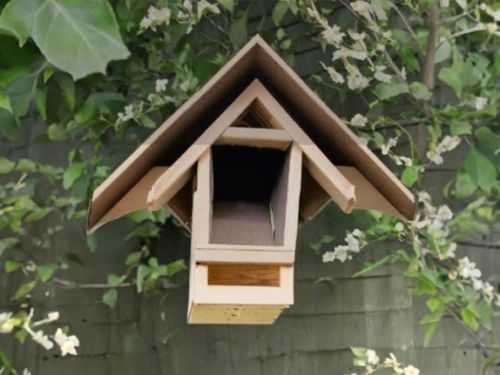
Conservation of Roosting Sites:
Identifying and preserving natural roosting sites is important for bat conservation. Protecting caves, tree cavities, and other natural habitats ensures that bats roost without encroaching on human spaces.
Building Bat Houses:
Providing alternative roosting sites by installing bat houses can encourage bats to relocate away from human structures. These houses mimic natural roosting sites and promote conservation by maintaining bat populations in suitable areas.
Research and Monitoring:
Ongoing research on bat behavior, migration patterns, and population dynamics helps inform effective control measures while minimizing negative impacts on bat populations. Regular monitoring allows for early detection of issues and prompt intervention.
Educational Outreach:
Public awareness and education about the benefits of bats in ecosystems can foster understanding and appreciation. Educating communities about the importance of bats in controlling insect populations can lead to increased tolerance and support for conservation initiatives.
